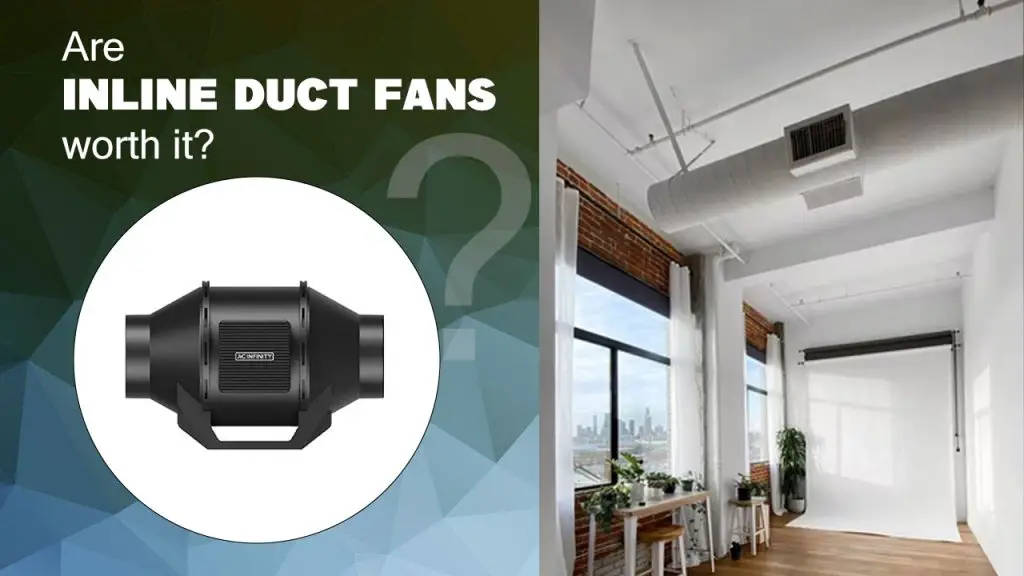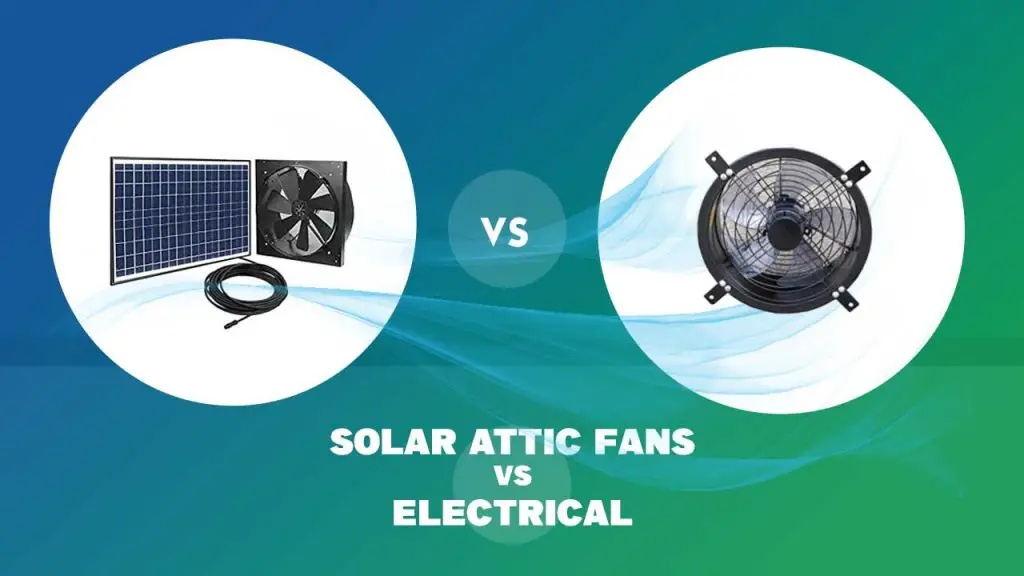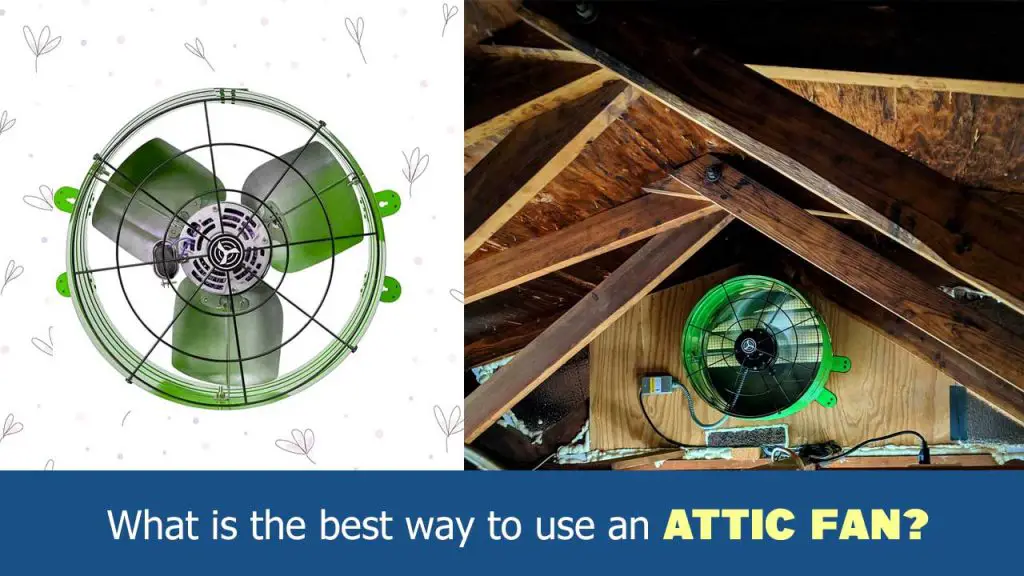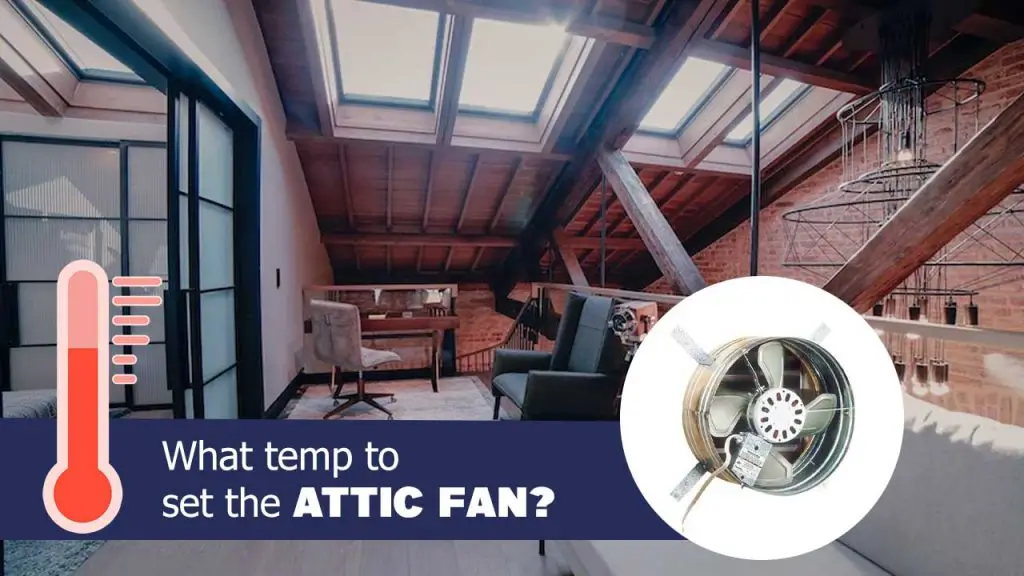After all the talk and raving reviews, it all comes down to one simple question; “are inline duct fans worth it?” By design, inline duct fans help to push air conditioning or furnace air through the duct to distant rooms and other parts of the house not easily reached by standard HVAC units.
They’re built to be inserted at a point close to the end of the duct to ensure enhanced efficiency. While they have been used extensively by homeowners across the globe, some people have questioned their relevance in homes and other spaces.
There are some who have argued that, while it may take more time, the air produced by air conditioners or furnaces will eventually get to the different parts of the house.
These people argue that getting an inline duct fan will only add to your expenditure and monthly HVAC bills. It’s possible you’ve also been wondering if it makes sense to install an inline duct fan and whether it will help your home better.
It is our hope that after you’re done reading this post, you’d be able to conclude whether or not inline duct fans are worth it.
What Does an Inline Duct Fan Do?
You’ll probably not know how important an inline duct fan is until you’re faced with a situation where you just can’t feel the cool air or warmth from your central air conditioner or heater.
You’re confused, not knowing what the problem is. Upon careful observation, you realize the HVAC unit is working well, but the duct runs too far for the air to get to all parts of the house.
What do you do? This is where an inline duct fan comes to play. By installing one at the appropriate spot in the duct, you’d be increasing airflow and ensuring it gets too distant rooms where it is needed.
An inline duct fan enhances air pressure in the duct and helps to push the air through the length of the ductwork to parts of the house where cooling or warmth is required. This, therefore, serves as a booster for your HVAC system and makes them work more efficiently.
So, when the cold bites harder in winter or the heat becomes unbearable in summer, an inline duct fan can just be the difference between suffering the consequences of the harsh weather or getting the relief you need, by boosting the efficiency of your HVAC system.
When Do You Need Inline Duct Fans?
This has already been indicated, but for the sake of emphasis, we’ll provide clarity on when you may need to install an inline duct fan.
1. To complement weak HVAC airflow
An inline duct fan should be installed when your central HVAC system’s airflow is weak and unable to move into the different parts of the house through the ductwork.
2. For very long ductwork
You also need an inline duct fan if your ductwork runs too long, making it difficult for your air-conditioner or heater’s airflow to run through and into your rooms.
3. To reach distant rooms and spaces
An inline duct fan can also be an answer to getting airflow to distant parts of the house that are ordinarily left out.
4. For ventilation and dehumidification
Some people use inline duct fans for ventilation, especially when there’s excess humidity in the duct, or even in the air that goes into the rooms from the duct.
How Long Does An Inline Duct Fan Last?
An inline duct fan should last for about 7-10 years on average. The actual lifespan of your unit will depend on the extent of use and the nature of maintenance.
For most brands, you’d find that the lifespan is indicated in hours, often ranging between 60,000 and 80,000 hours. What this means is, that if you run the unit for only 10-12 hours daily, you’re likely to have your fan last for about 15 years or more.
How long the duct fan runs per day is a big factor, coupled with how well you maintain it, and the other safety parameters you’ve put in place.
Proper cleaning of the components such as blades, filters, and the body of the fan, oiling where necessary, and carrying out routine maintenance work are very crucial to enhancing the lifespan of an inline duct fan, as well as ensuring it continues to work efficiently.
But, the lifespan may also depend on the brand’s quality and how well built the product is. Added to these is the importance of proper installation. Installing the fan the wrong way may not only make it run poorly but also affect its lifespan severely.
Are Inline Duct Fans Worth It?
Yes, inline duct fans are worth it.
This is not just because they are effective and help to enhance cooling or warmth, as well as make your home or space more comfortable, but they are also quite affordable and energy-efficient.
Rather than upgrade your central air conditioner because it doesn’t get to a distant room in your home (a move that will cost you hundreds of dollars or even a few thousand), you can simply spend between $250 and $400 getting an inline duct fan and installing it for better airflow.
It is the cheaper and wiser choice, compared to upgrading your HVAC unit or installing a standalone unit in a room that lacks air. The alternative will not only cost you more in initial investment but also in terms of running costs over time.
This 6″ AC Infinity RAXIAL S6 Inline Booster Duct Fan is a good example of a budget duct fan with low initial investment and low running cost as well.
Even a more expensive option like the Terrabloom 6″ duct fan would probably still make more economic sense than upgrading your HVAC system altogether.
How To Select The Suitable Inline Duct Fan For You?
The most important factors to consider when choosing an inline duct fan are size and power in relation to your home’s ductwork requirement. Let’s explain that further;
Size of Fan
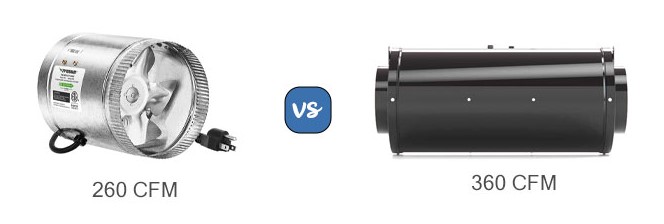
Size must be looked at from two different angles; the diameter of the fan and the performance of the fan. For instance, one 6-inch fan may produce up to 360 CFM, while another 6-inch may only offer around 260 CFM.
They are both 6 inches in size and may fit properly in your ductwork, but they vary in airflow and this can be a deciding factor, depending on what you’re looking for. It is best to get the diameter that fits the size of your ductwork, and the CFM that fits the length.
Fan Power
The fan motor is where the power of the fan lies. For instance, it is better to get an inline fan with an EC motor because of its energy efficiency, strength and quiet operation.
Beyond effectiveness, a fan’s motor can determine how much space it can cover. There are three major types to choose from;
1. Axial motor-driven inline fans
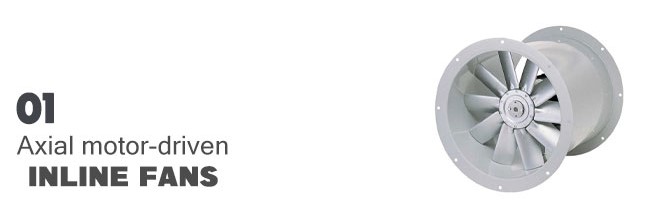
If you only need to take care of a small room or space, such as a bathroom, kitchen, laundry closets, store or crawlspace, this is a suitable fan to get. Generally, they can only move air over a minimum distance of up to 100mm to 150mm (1 to 1.5 meters) through the ductwork.
2. Centrifugal inline fans
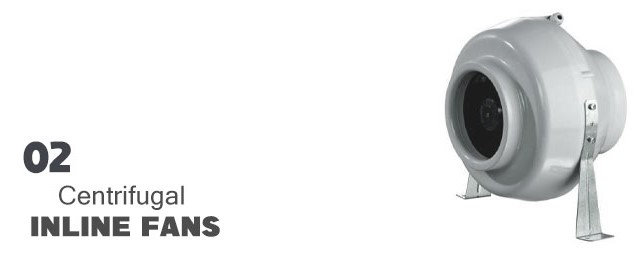
Unlike axial motor-driven fans, centrifugal fans are able to cover larger spaces, like large halls, gymnasiums, and whole-house applications because they can go over long distances and through bends, curves and edges without losing too much air pressure.
They are industrial in nature and can move airflow to distances up to 20m.
3. Mixflow inline fans

This is more of a hybrid between the axial and centrifugal models.
They’re able to handle medium to large distances like commercial bathrooms and industrial laundries, often able to navigate some bends and junctions along with the ductwork. They’re also suitable for large rooms.
Top 5 Inline Duct Fans and Best Suitability
| # | Inline Duct Fan | Suitability |
| 1 | AC Infinity CLOUDLINE LITE A4 | For Small Spaces, such as grow tents, bathrooms, etc. |
| 2 | TerraBloom 10″ Silenced EC Inline Duct Fan | Suitable for long-distance airflow |
| 3 | AC Infinity CLOUDLINE T6 | For Remote Control with Bluetooth technology |
| 4 | TerraBloom 8″ Silenced EC Inline Duct Fan | Perfect for quiet operation |
| 5 | VIVOSUN 6 Inch Inline Duct Fan | Suitable for Low Noise Operations in Basements, Bathrooms, Kitchens, and Attics etc., |
Final Words:
For emphasis, it is important to state again that inline duct fans are truly worth it, but you must also ensure you get the right product best suited to your needs. Look out for the size, motor type, motor power, airflow rate, as well as build material.
While it is important to get a good inline duct fan- and one that lasts- you have a part to play. Maintaining your duct fan regularly is a good place to start if you want to enjoy the benefits for a long time to come.
| Photo | Title | Buy |
|---|---|---|

|
LEVOIT Air Purifier for Home & Bedroom - For Allergies and Pets Hair | Check Price On Amazon |

|
BREEZOME 60 OZ Quiet Dehumidifiers for Home, Dual-Semiconductor | Check Price On Amazon |

|
AquaOasis™ Cool Mist Quiet Ultrasonic Humidifier for Bedroom & Large room | Check Price On Amazon |

|
43.3'' Portable Air Conditioners, 3-IN-1 Evaporative Air Cooler w/Remote | Check Price On Amazon |

|
BlueDri BD-AS-550-BL Negative Machine Airbourne Cleaner HEPA Air Scrubber | Check Price On Amazon |

|
Space Heater, VCK 24" 12ft/s Fast Quiet Heating Portable Electric Heater | Check Price On Amazon |
